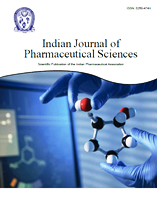Abstract
Recent Physical Methods In Transdermal Drug Delivery Research
This paper gives an insight into the new hi-tech analytical probes that are used for the biophysical measurements of the human stratum corneum, its barrier functions and lipid composition. Electron Microscopy is used for quantitative ultrastructural studies in the skin, and the detect many changes in the various layers and organelles of the skin after treatment with a penetration enhancer. ATR-FTIR is a powerful in vivo technique for studying the biophysics of skin functions, in particular, the intercellular lipid domains and the degree of hydration of the stratum corneum. EPR is a spectroscopic method of detecting unpaired electrons (paramagnetic species) and requires the presence of a paramagnetic nitric acid moiety. Nitroxide skin probes are used for measuring membrane fluidity and polarity, lipid – protein interactions, and to study the skin penetration of spin – labeled drugs non-invasively. Thermal analysis techniques such as DTA and DSC are used to investigate the physical properties of stratum corneum and the measurement of lipid and protein thermodynamic behaviour in model and biological membranes.




